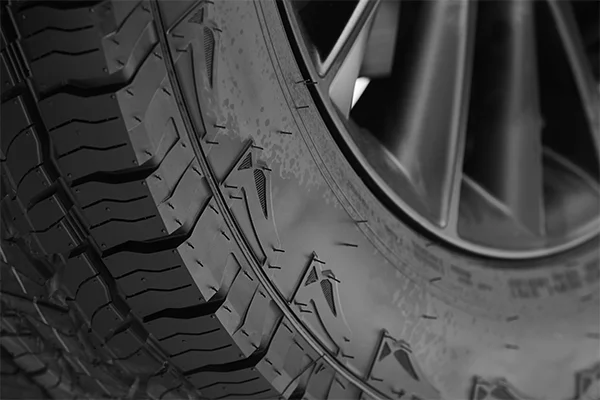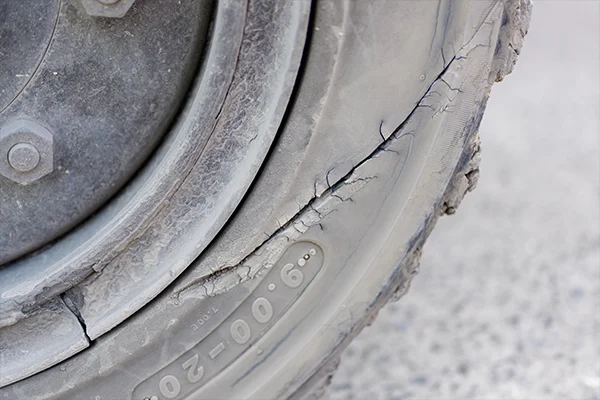Can You Drive With a Damaged Tire Sidewall?
Tire damage and wear is a reality of car ownership. While it may not happen often, tires are susceptible to damage from road debris, curbs, and potholes. From punctures and bulges to uneven tread wear, it can be difficult to determine whether or not a tire is safe to drive on after it sustains damage. While any tire damage needs to be taken seriously, in this article, we are going to dive into the risks of driving on a tire with a damaged sidewall.

What is the Sidewall on a Tire?
Understanding the anatomy is important when talking about tire damage. The sidewall refers to the outside (or inside) of the tire that isn’t touching the road. The sidewall is typically stamped with the manufacturer’s name, size, and other important information. The height of the sidewall can vary significantly, spanning from ultra-low profile on performance tires to extremely high profile on off-road and truck tires.
What Purpose Does the Tire Sidewall Serve?
This may seem like a simple question, the height of a tire’s sidewall can have a significant impact on how your vehicle rides. Tire sidewall height directly impacts the lateral stability of a tire. Imagine taking a corner on a twisty road. The weight of your vehicle will transfer from one side to another. A tire with a low-profile sidewall is more stable in a situation like this, giving you better control. This is why sports cars and other performance vehicles tend to utilize tires with smaller sidewalls.
How Does a Tire Sidewall Become Damaged?
The sidewall is the weakest part of a tire. The sidewall itself does not support the weight of the vehicle. Rather, the air inside the tire is what bears the brunt of the weight.
Unlike the tread, tire sidewalls are not exposed to the continuous wear of the asphalt you’re driving on. The real danger to sidewalls comes from road debris and hazards like potholes, and impact with elevated surfaces like curbs. Nearly all sidewall damage is a result of impact or, in some cases, manufacturer defects.
Types Of Sidewall Damage
Sidewall damage can occur internally or externally and can present in a few ways.
Internal Damage
If you notice a protruding bubble or bulge on the sidewall of your tire, it’s an indication that it has sustained internal damage. Impact with a pothole or other debris can cause air from the tire to leak into the body of the tire, known as the carcass. Essentially, the integrity of the sidewall has been compromised, and while a bulge won’t cause a flat, it makes the tire extremely unsafe.
External Damage
External sidewall damage occurs when debris, curbs, or other road hazards cause damage to the rubber on the outside of the tire. Chunks of rubber, tears, and punctures can all impact the structural integrity of the tire, and potentially lead to flats or blowouts.

Is It Safe to Drive on a Tire With a Damaged Sidewall?
No. Driving with a damaged tire, especially a damaged sidewall, is not safe. You run the risk of a catastrophic blowout, which could cause an accident or damage other cars around you on the road. If you notice any sidewall damage on your tires, it’s important to get it fixed right away.
Auto Repair in Austin Texas
From general service to in-depth repairs, you can trust the expert technicians at Edgestone Automotive for all your auto repair needs. We are conveniently located at 10908 US-290 in Austin, Texas. Give us a call or schedule an appointment online today!
